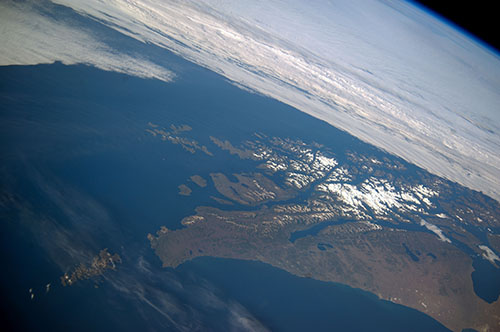A .gov website belongs to an official government organization in the United States.
A lock () or https:// means you've safely connected to the .gov website. Share sensitive information only on official, secure websites.
16 December 2020

The scientific journal Nature published its year-end list of '10 Remarkable Discoveries from 2020' published in the journal, selecting a March 2020 publication led by CSL/CIRES researcher Antara Banerjee and co-authored by CSL/CIRES researcher Kai-Lan Chang. The publication, entitled A pause in Southern Hemisphere circulation trends due to the Montreal Protocol, reported that atmospheric circulation effects caused by the hole in the Antarctic stratospheric ozone layer have paused since ozone recovery started in 2000 as a direct result of the ban of ozone-depleting substances enacted by the Montreal Protocol. The Antarctic ozone hole, which resides at altitudes of around 10–20 kilometers, has affected atmospheric circulation all the way down to the surface in the Southern Hemisphere – most notably, by shifting the summertime jet stream polewards. While the cessation of these circulation trends has been noted previously, Banerjee and colleagues are the first to formally attribute it to the effects of the Montreal Protocol.
Banerjee, Antara, John C. Fyfe, Lorenzo M. Polvani, Darryn Waugh, and Kai-Lan Chang, A pause in Southern Hemisphere circulation trends due to the Montreal Protocol, Nature, doi:10.1038/s41586-020-2120-4, 2020.
Observations show robust near-surface trends in the Southern Hemisphere tropospheric circulation towards the end of the 20th century, including a poleward shift in the midlatitude jet, a positive trend in the Southern Annular Mode, and an expansion of the Hadley cell. It is established that these trends have been driven by ozone depletion in the Antarctic stratosphere due to emissions of ozone-depleting substances. Here we show that these widely reported circulation trends have, in fact, paused, or slightly reversed, around the year 2000. Using a pattern-based detection and attribution analysis of atmospheric zonal wind, we show that the pause in circulation trends is forced by human activities, and has not occurred simply due to internal or natural variability of the climate system. Further, we demonstrate the essential role of stratospheric ozone recovery as a result of the Montreal Protocol in driving the pause. Since the pre-2000 circulation trends have impacted precipitation, and potentially, the ocean circulation and salinity, we anticipate that a pause in these trends will have wider impacts on the Earth system. Signatures of the Montreal Protocol and the associated stratospheric ozone recovery might therefore manifest, or might have already manifested, in other aspects of the Earth system.